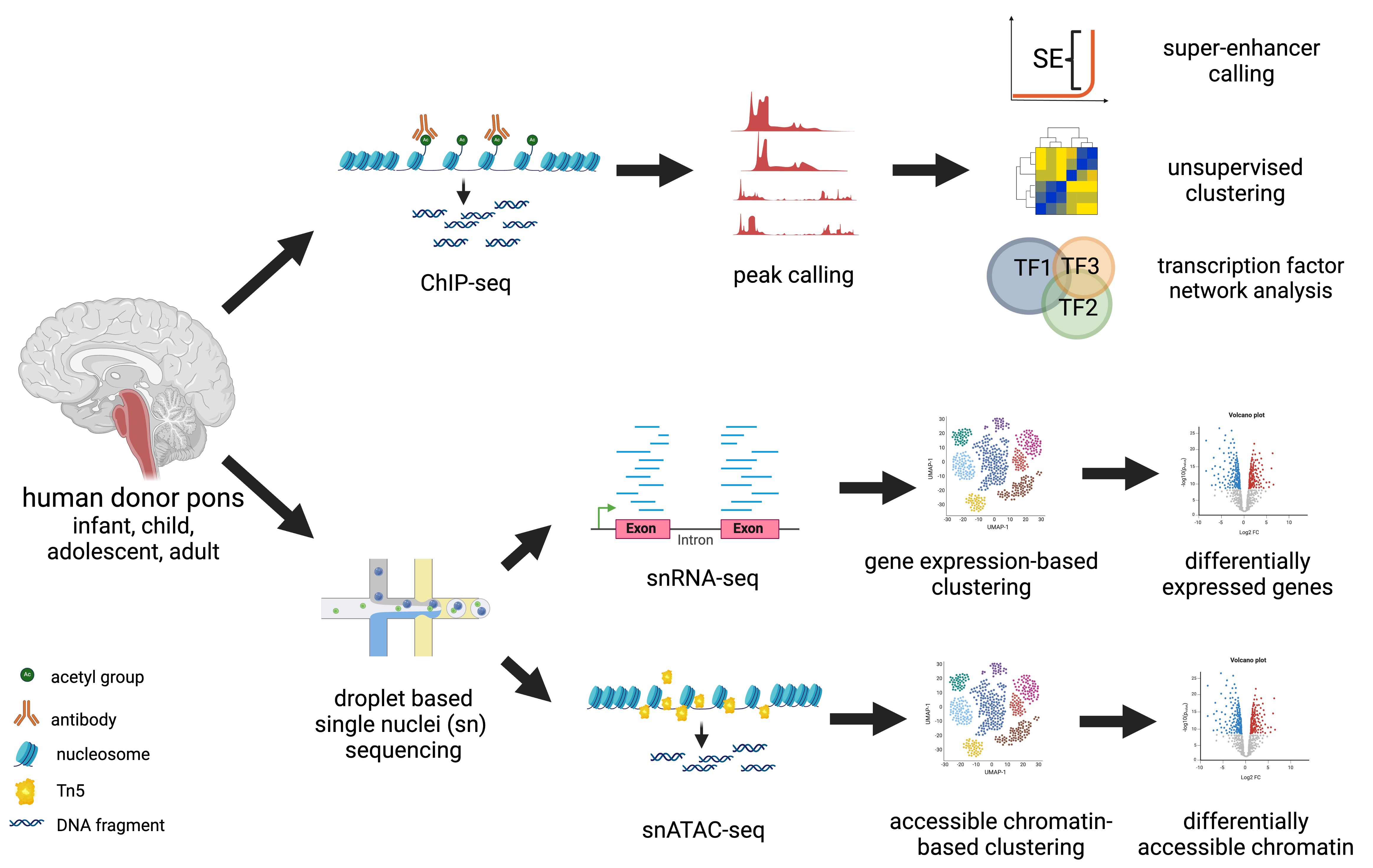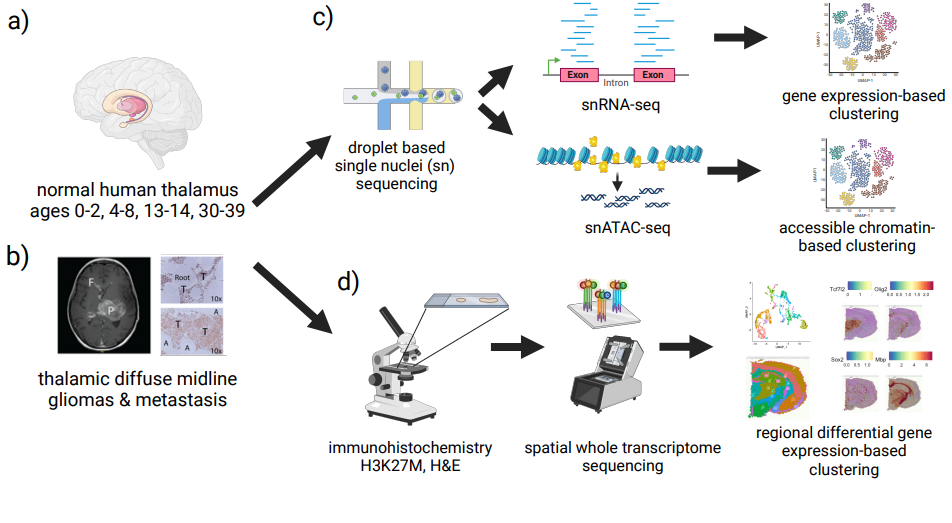Wedemeyer Lab

The most common causes of neurologic disability in children include brain tumors, which are the most common cause of pediatric cancer deaths, and blood vessel malformations, which are the most common cause of stroke in the pediatric population. These diseases also affect adults, pediatric brain tumors have different driver mutations and present in different anatomic locations from adult tumors while pediatric vascular malformations may have a higher recurrence rate and a more aggressive course than adult vascular malformations. Although tremendous progress has been made in the understanding of the different types of brain tumors and vascular malformations, our understanding of how these processes differ from normal development is limited by our current understanding of normal human development.
The Wedemeyer Laboratory seeks to use next generation sequencing of normal autopsy tissues and diseased tissues alongside cell culture and animal models of disease to improve treatments for pediatric neurosurgery patients.
Current Projects

Pontine gliomas are among the most lethal of pediatric brain tumors and are >95% fatal within 2 years of diagnosis. These tumors are a distinctly pediatric disease with a peak incidence of 5-7 years and are rarely seen in adulthood. Despite great advances in our understanding of tumors and their subtypes, our understanding of normal postnatal pontine development remains limited. A multi-omic analysis is underway to better understand the unique susceptibility of the pediatric brain to these lethal tumors using chromatin immunoprecipitation (ChIP-seq) to identify active enhancers and combined single nuclei transcriptomics (snRNA-seq) and single nuclei assay for transposase-accessible chromatin with sequencing (snATAC-seq) of normal human pons from infant, child, adolescent, and adult donors. These studies are expected to build a searchable public roadmap, the Human Developmental Brain Atlas (HD-BAT), of normal human development to better frame our understanding of the processes that drive pontine gliomas in order to develop new treatments for this lethal childhood disease.

Brain tumors account for >50% of pediatric cancer deaths and are most commonly located in the cerebellum. These tumors include medulloblastomas, posterior fossa ependymomas, pilocytic astrocytoms, and less common subtypes such as ATRT and ETMR. Despite great advances in our understanding of tumors and their subtypes, our understanding of normal postnatal cerebellar development remains limited. A multi-omic analysis is underway to better understand the unique susceptibility of the pediatric brain to these lethal tumors using chromatin immunoprecipitation (ChIP-seq) to identify active enhancers and combined single nuclei transcriptomics (snRNA-seq) and single nuclei assay for transposase-accessible chromatin with sequencing (snATAC-seq) of normal human pons from infant, child, adolescent, and adult donors. These studies are expected to build a searchable public roadmap, the Human Developmental Brain Atlas (HD-BAT), of normal human development to better frame our understanding of the processes that drive childhood cerebellar tumors in order to develop new treatments for a leading cause of morbidity and mortality in children.
Inside the Wedemeyer Lab
Our Research
The Wedemeyer Laboratory uses next generation sequencing applications such as bulk and single nuclei sequencing to study the genetic, epigenetic, and transcriptional changes that accompany normal human brain development and pediatric brain diseases such as cancer and blood vessel malformations. Genetic mutations refer to changes in the DNA structure and can be identified using whole exome (WES) or whole genome sequencing (WGS) of cells and tissues. Epigenetic changes refer to covalent modifications to either the DNA itself, including methylation of cytosines, or to the tails of the histone proteins that organize DNA, including methylation and acetylation of lysines, and can be identified using chromatin immunoprecipication and next generation sequencing (ChIP-seq) of proteins of interest or by the assay for transposase-accessible chromatin with sequencing (ATAC-Seq) which identifies DNA with open chromatin. Transcriptional changes can be identified using bulk and single cell or single nuclei sequencing to identified expressed genes.
Featured Publications
- Editorial. Prolonged survival in diffuse midline gliomas: a socioeconomic status symbol or a marker of good supportive care?
- Epigenetic dysregulation in meningiomas
- HOTAIRM1, an enhancer lncRNA, promotes glioma proliferation by regulating long-range chromatin interactions within HOXA cluster genes
- Complications associated with microscopic and endoscopic transsphenoidal pituitary surgery: experience of 1153 consecutive cases treated at a single tertiary care pituitary center
- Long-term surgical outcomes following transsphenoidal surgery in patients with Rathke's cleft cysts
Join the Team at the Institute for Genomic Medicine!
Click the link below to view current job listings and to learn more about careers at Nationwide Children's Hospital.



